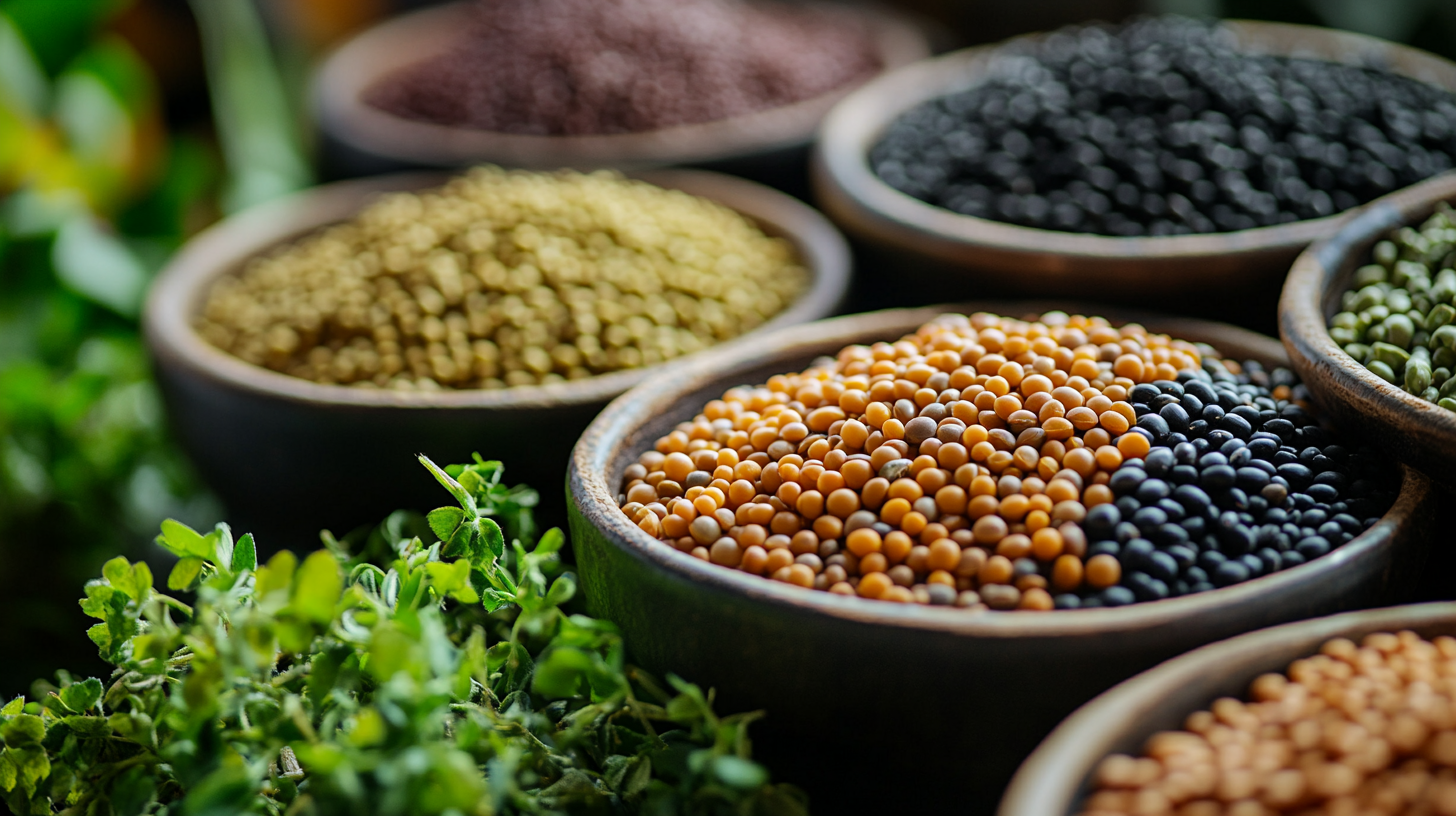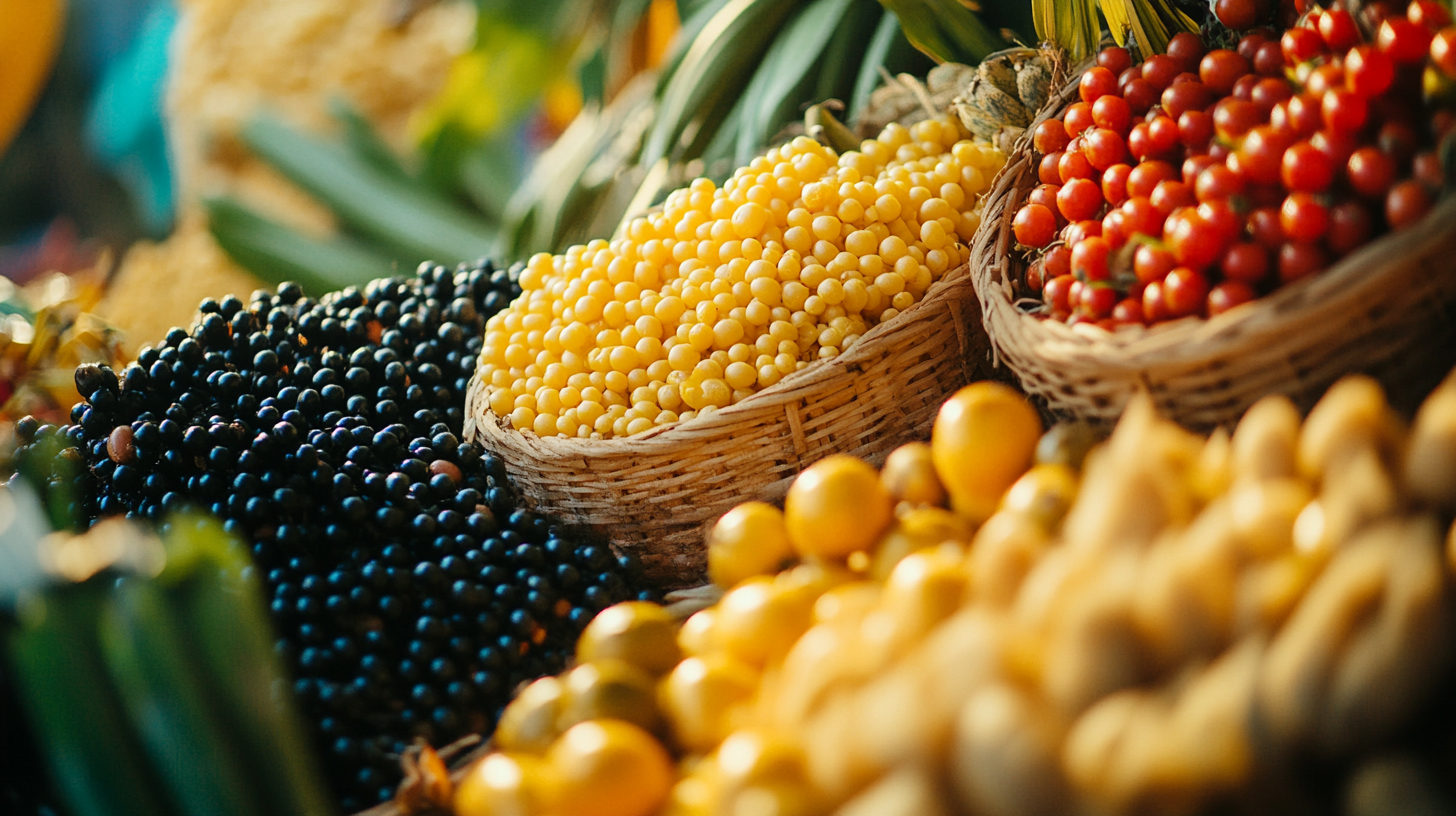In the ever-evolving landscape of global sourcing, the significance of Plant Active Ingredients cannot be overstated. As industries seek sustainable and innovative solutions, the demand for natural compounds derived from plants is witnessing a remarkable surge. These ingredients play a crucial role across various sectors, including pharmaceuticals, cosmetics, and dietary supplements, as they offer not only effectiveness but also a safer alternative to synthetic chemicals. As businesses strive to meet consumer expectations and regulatory standards, understanding the complexities involved in sourcing Plant Active Ingredients becomes paramount. This blog aims to provide comprehensive insights into the sourcing strategies, benefits, and challenges associated with these valuable compounds, guiding stakeholders towards informed decisions that ensure both efficacy and sustainability in their product offerings. Join us as we delve into the rich world of Plant Active Ingredients and uncover the pathways to successful global sourcing.

The importance of plant active ingredients in global market dynamics cannot be overstated, especially as the chemical industry pivots toward innovation and sustainability. In recent years, the demand for natural and eco-friendly components in cosmetic products has surged, reflecting a growing consumer preference for herbal and upcycled materials. This shift is not only reshaping product formulations but also driving substantial growth in related markets, with the global market for active ingredients projected to reach approximately $8.4 billion by 2030.
Further emphasizing this trend, the herbal medicine market has seen an impressive valuation of $70.57 billion in 2023, with expectations to grow significantly in the coming years. As companies increasingly focus on sustainable sourcing practices, we can expect to see new players entering the market, drawn by the potential for innovation. The dynamics of consumer preferences are playing a pivotal role, compelling manufacturers to adapt and evolve their offerings to meet the rising demand for plant-based solutions. These developments underscore the integral role that plant active ingredients will play in shaping the future of the global market landscape.
In recent years, the surge in demand for plant-based active ingredients has reshaped the sourcing landscape across various industries, particularly in health and wellness sectors. As highlighted in the latest report by CBNData, over 1,500 startups worldwide are pivoting towards innovative solutions, focusing on plant-derived components that offer sustainable and efficacious alternatives. This trend aligns with global consumer preferences for clean-label products that emphasize transparency and efficacy.
According to Whole Foods Market’s recent publication on food trends for 2024, the integration of functional ingredients—such as adapted caffeine and other botanicals—demonstrates a significant shift towards products that enhance well-being and vitality. With plant active ingredients being positioned at the forefront of this transformation, brands are increasingly investing in R&D to extract these powerful components sustainably, thereby optimizing both product performance and brand loyalty. As the sourcing of these ingredients evolves, companies that adapt to these market dynamics are likely to gain a competitive edge in an increasingly crowded marketplace.
The supply chain for plant active ingredients is significantly influenced by key regions that stand out for their production capabilities and biodiversity. Notably, regions such as Southeast Asia, South America, and Europe have emerged as dominant players in this sector. Southeast Asia, with its rich flora and warm climate, provides a diverse array of plant extracts that are essential for various industries, including pharmaceuticals, cosmetics, and food. Countries like India and Indonesia are at the forefront, leveraging their traditional knowledge and sustainable practices to extract potent botanical compounds.
In South America, the Amazon rainforest serves as a treasure trove of unique plant species, many of which have been utilized for centuries by indigenous communities. This wealth of natural resources offers untapped potential for innovative product development and global sourcing. Meanwhile, Europe boasts a strong regulatory framework that emphasizes quality and safety, attracting businesses seeking reliable supply chains for plant active ingredients. With countries like Germany and France investing in research and development, the synergy between regional capabilities and market demands creates a dynamic environment for sourcing plant-based solutions.

The market for plant active ingredients is witnessing significant growth as consumer demand for natural and organic products continues to rise. By 2025, the global skincare market is projected to increase from $122.11 billion, building on its valuation of $115.65 billion in 2024. This shift reflects a broader trend toward natural solutions in skincare, with plant-based active ingredients playing a pivotal role in formulating effective and safe cosmetic products.
Particularly noteworthy is the growth of the botanical supplements market, expected to surge from $60.02 billion in 2025 to $118.74 billion by 2032. As more consumers prioritize wellness and holistic health, the demand for supplements derived from plant actives is anticipated to expand rapidly. Similarly, the essential oil market is set to grow significantly, with values projected to reach from $26.71 billion in 2025 to $49.07 billion by 2033.
This robust growth across various segments emphasizes the critical importance of understanding plant active ingredients for businesses aiming to succeed in global sourcing. Companies that strategically incorporate these ingredients into their product offerings will not only meet consumer preferences but also position themselves advantageously within a competitive marketplace.

Sourcing plant active ingredients responsibly is not just a trend; it is an imperative for sustainable development in the global market. Companies are increasingly held accountable for their environmental impact and the ethical implications of their sourcing practices. Implementing sustainability practices in sourcing can help businesses minimize their footprint, promote biodiversity, and support local communities. By prioritizing responsible cultivation methods and securing fair trade partnerships, companies can contribute to the preservation of ecosystems while ensuring a consistent supply of high-quality ingredients.
Moreover, transparency in sourcing is crucial for building trust with consumers. Brands that clearly communicate their sustainability initiatives and the origins of their ingredients can enhance their reputation and attract environmentally conscious customers. Collaborating with local farmers and investing in sustainable farming techniques not only boosts the quality of plant active ingredients but also fosters socio-economic development in the areas they source from. As consumers become more informed, the demand for sustainably sourced products will continue to rise, pushing companies to innovate and adapt their sourcing strategies for a more sustainable future.
| Ingredient | Source | Sustainability Practices | Global Market Availability | Key Benefits |
|---|---|---|---|---|
| Curcumin | Turmeric | Organic farming methods | Widely available | Anti-inflammatory, antioxidant |
| Resveratrol | Red grapes | Ethically sourced | Moderately available | Heart health, anti-aging |
| Aloe Vera Gel | Aloe plants | Sustainable harvesting | Easily sourced | Skin hydration, healing |
| Chamomile Extract | Chamomile flowers | Fair trade practices | Globally available | Calming effects, digestive health |
| Ginseng Extract | Panax ginseng | Sustainable cultivation | Widely sourced | Energy boost, cognitive improvement |
2025 Bio-Botanica, a division of Bio Answer Holdings Inc. All Rights Reserved.